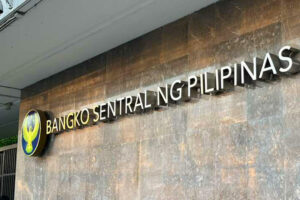THE Bangko Sentral ng Pilipinas (BSP) is expected to further lower interest rates this year by as much as 100 basis points (bps) amid easing inflation, analysts said.
“We expect inflation in the Philippines to remain low, which will open the door for the central bank to cut interest rates further over the coming months,” Capital Economics said in a report.
“Our forecast for a further 100 bps of cuts this year makes us more dovish than the consensus.”
The BSP last month opted to keep its key rate steady at 5.75% amid global trade uncertainties. It had delivered a total of 75 bps worth of rate cuts in 2024.
However, BSP Governor Eli M. Remolona has said monetary authorities remain in an easing cycle, signaling the possibility of a 25-bp cut at the Monetary Board’s meeting on April 10.
“The central bank left interest rates unchanged at its February meeting, but we expect them to resume their easing cycle soon given the subdued outlook for inflation,” Capital Economics said.
“Inflation sits comfortably within the BSP’s 2-4% target range, and is likely to remain low over the coming quarters.”
Capital Economics projects inflation to average 3.2% this year and 2.9% in 2026.
The central bank’s baseline forecasts for inflation are 3.5% for 2025 to 2026. Accounting for risks, inflation could hit 3.7% in 2026.
Headline inflation slowed to 2.1% in February, bringing average inflation to 2.5% in the first two months.
Economic output is also expected to be supported by further monetary easing, Capital Economics said.
“On the plus side, consumption growth should remain robust over the forecast period, helped by a combination of lower inflation and interest rate cuts.”
“However, the boost from strong consumption will be offset by tighter fiscal policy. Debt shot up during the pandemic and the government is trying to bring it down steadily.”
Capital Economics also noted that the economy is unlikely to be significantly impacted by US tariff policies.
“A key uncertainty over the coming year is whether and to what extent Donald Trump follows through with his threats to impose tariffs and clamp down on immigration,” it said.
“The Philippines is a relatively closed economy and so less vulnerable than other parts of the region to tariffs. However, Trump’s deportation plans could affect remittances from the US to the Philippines, which are equivalent to around 3.5% of the country’s GDP.”
Meanwhile, S&P Global Ratings economist for Asia-Pacific Vishrut Rana separately said he expects the BSP to cut by 50 bps this year.
“For the Philippines, we see the policy rate ending up at 5.25% towards the end of this year, and 4.5% next year,” he said on Money Talks with Cathy Yang on One News on Wednesday.
“So, still a little bit more aggressive than the Fed, but not highly increased relative to the US interest rates also,” he added.
Mr. Rana said the central bank will consider weaker-than-expected growth in its policy decisions.
“For the Philippines, what we see is that in the latter half of 2024, we saw some softening of domestic activity, particularly domestic demand.”
S&P sees growth expanding by around 6% this year.
“In that environment, inflation still remains very much under control. So, the BSP has flexibility to ease interest rates,” Mr. Rana said.
“On the other hand, the capital flow environment is still quite uncertain. There’s still capital outflow pressures. The currency has been broadly stable. But the BSP will not want to move too quickly to avoid the risk of triggering capital outflows, particularly while the US Fed and interest rates remain relatively elevated.” — Luisa Maria Jacinta C. Jocson

